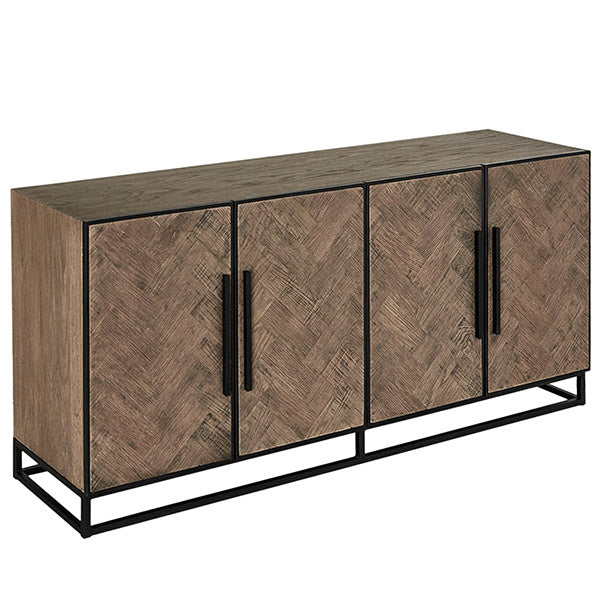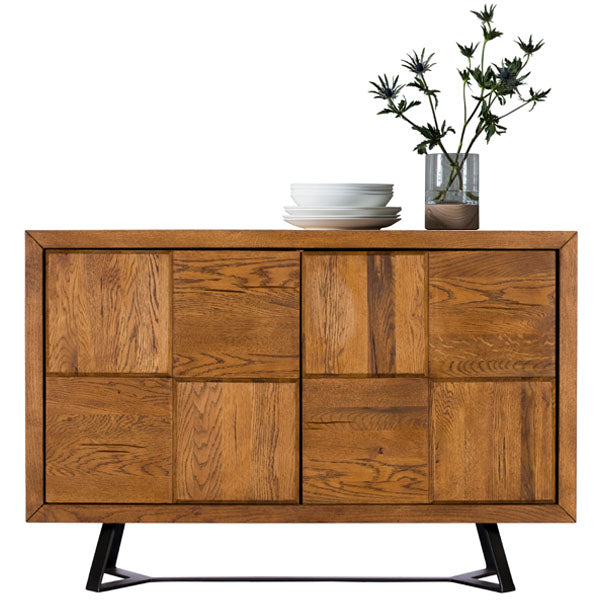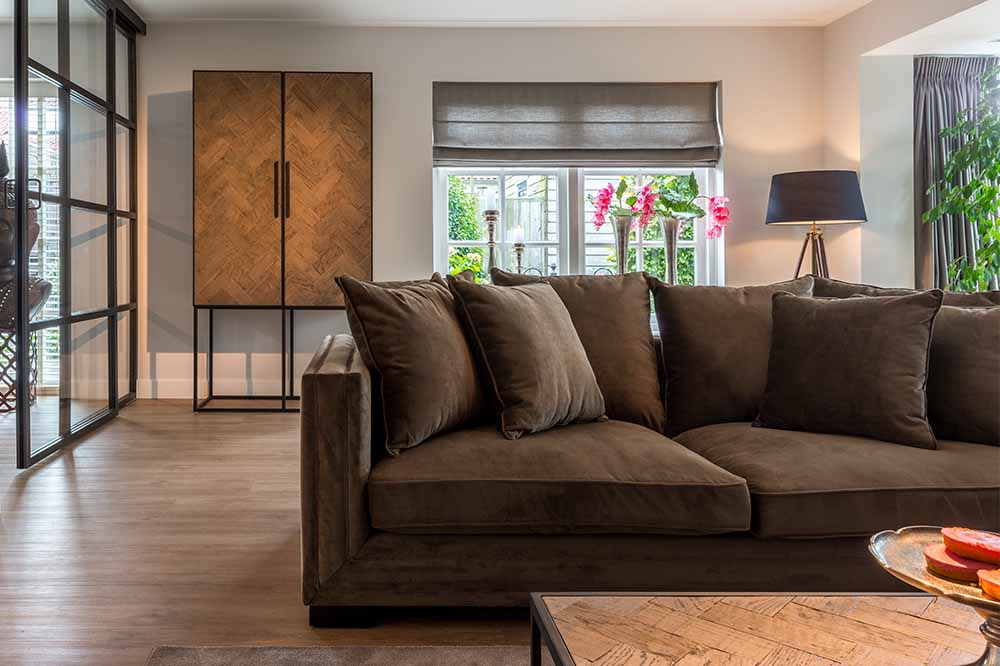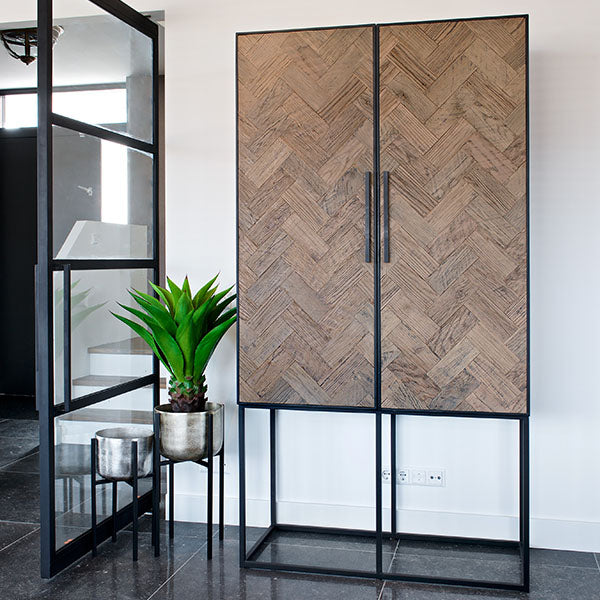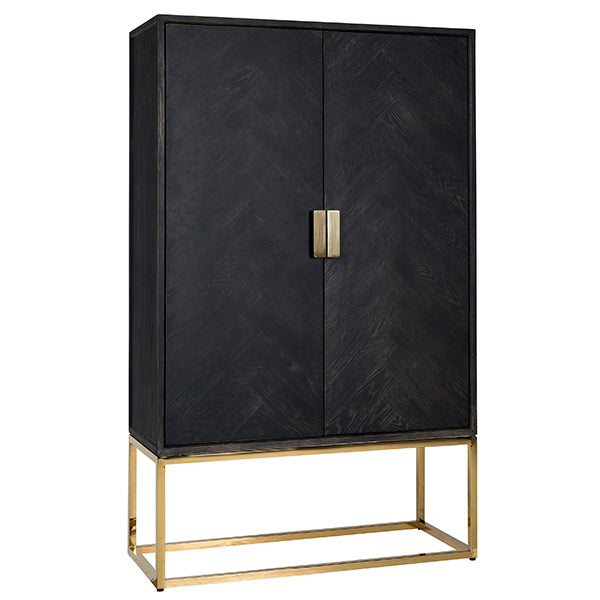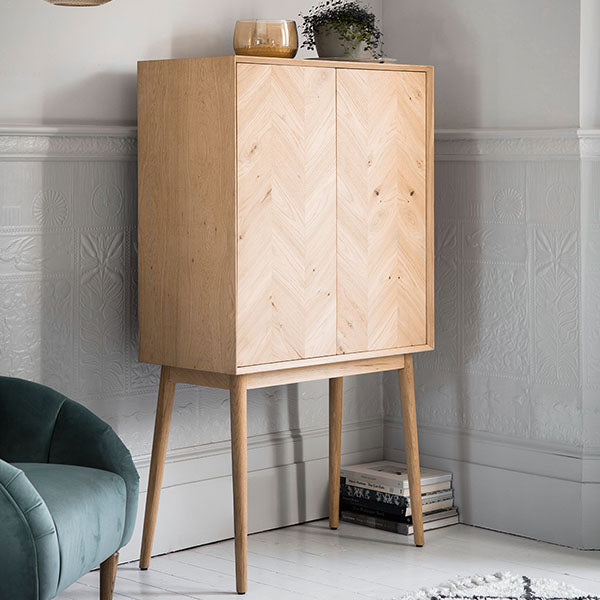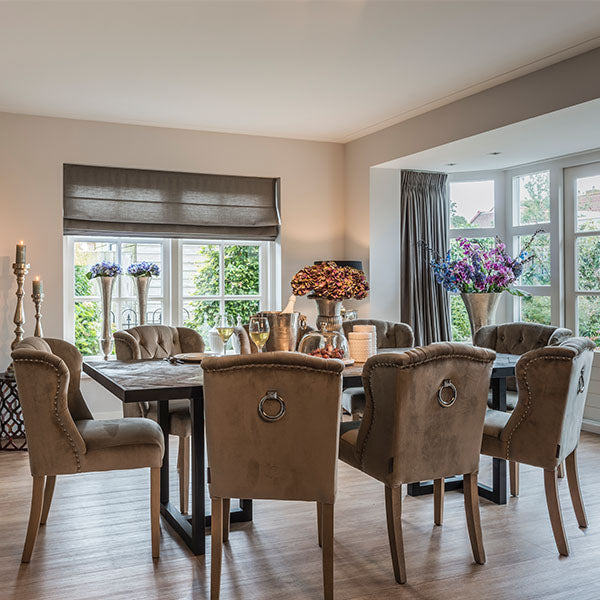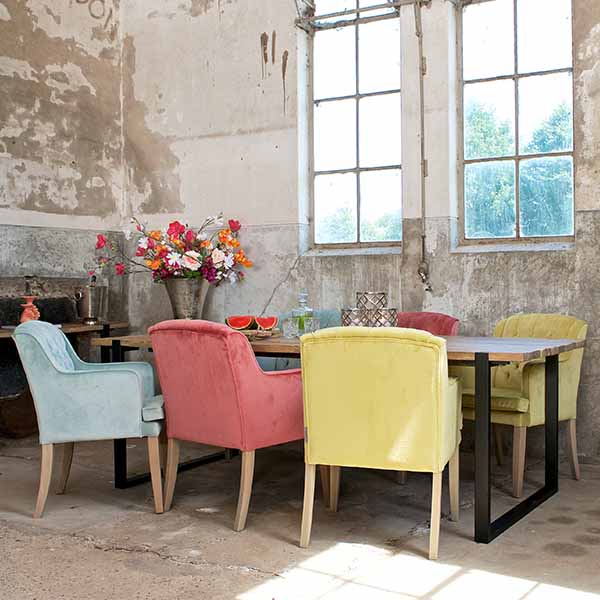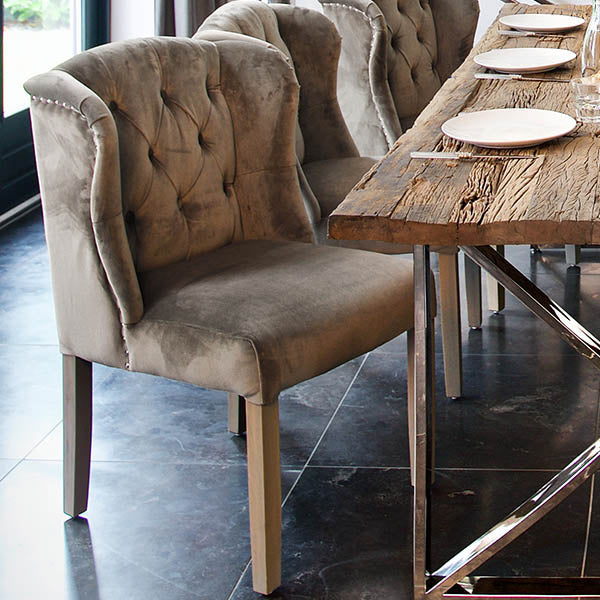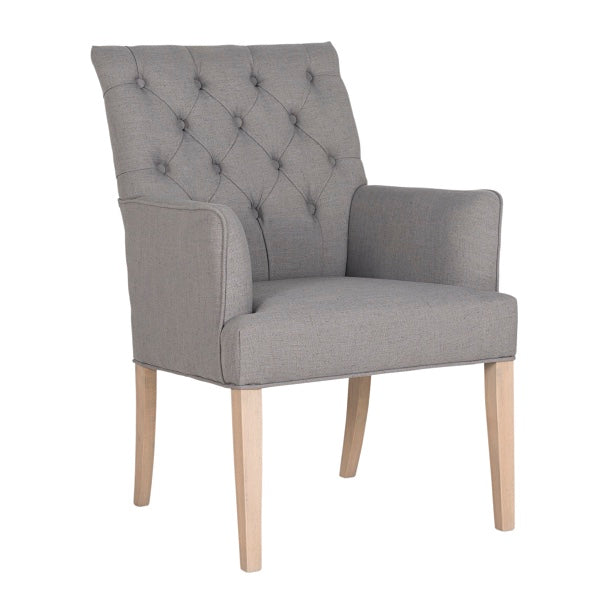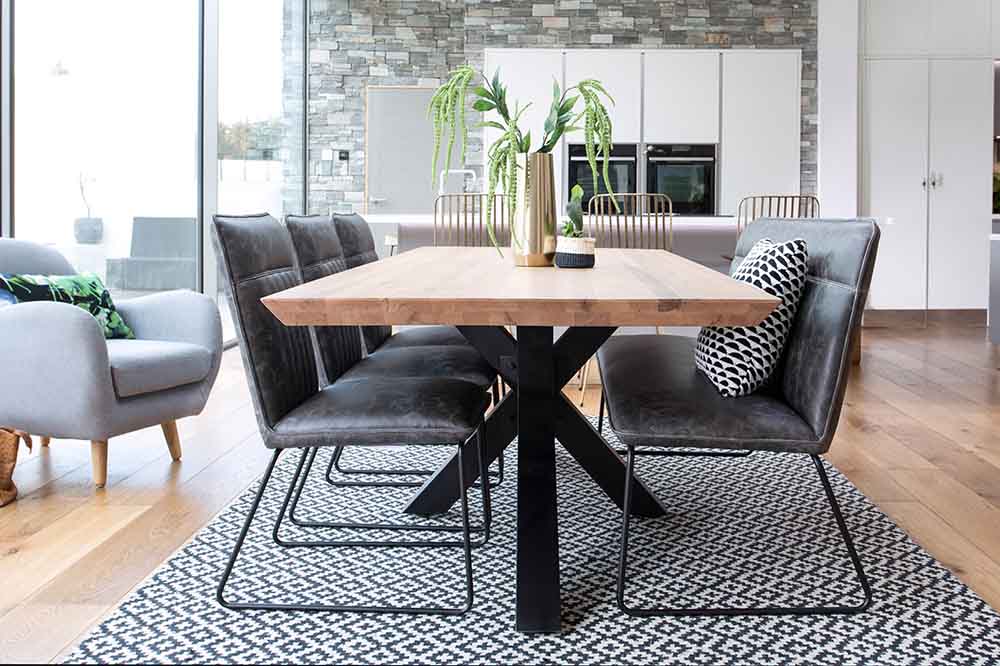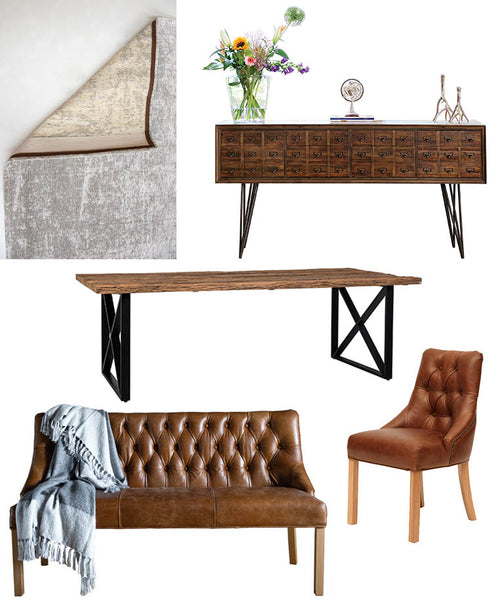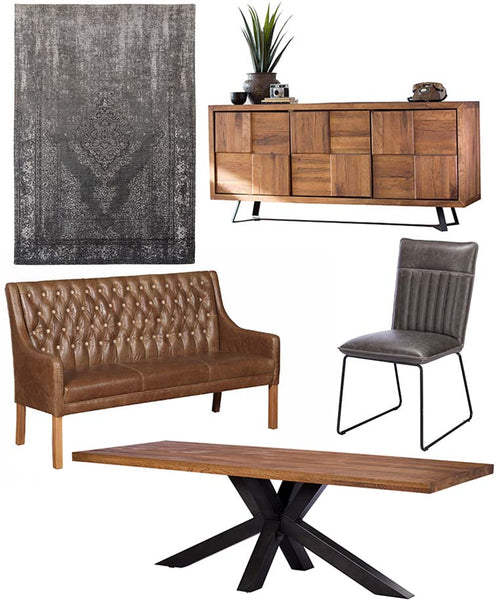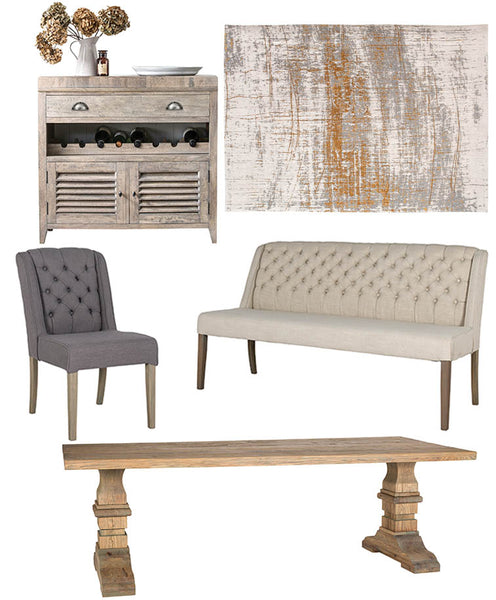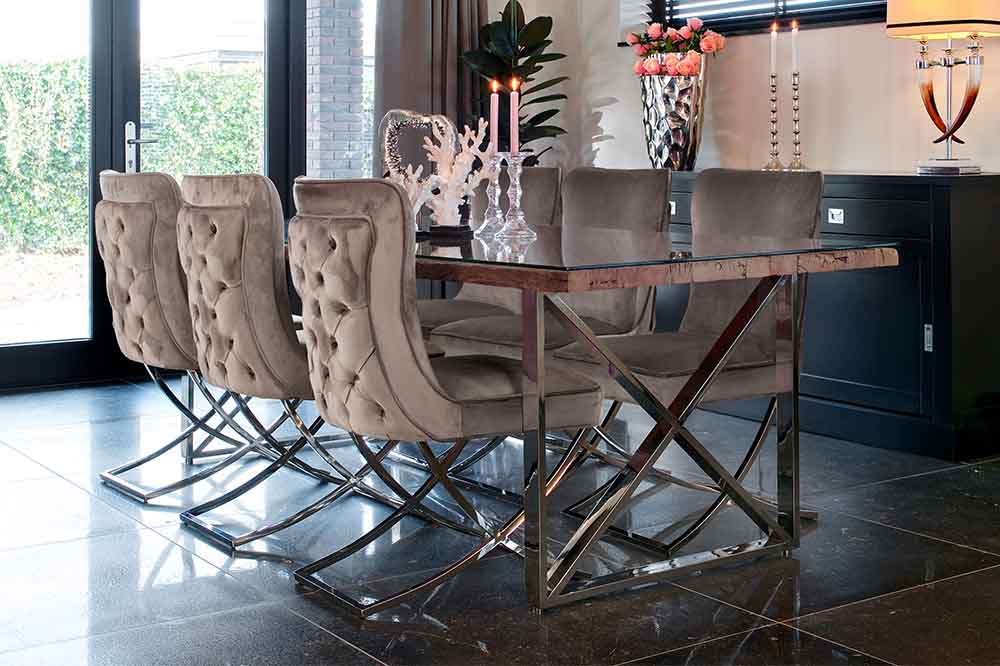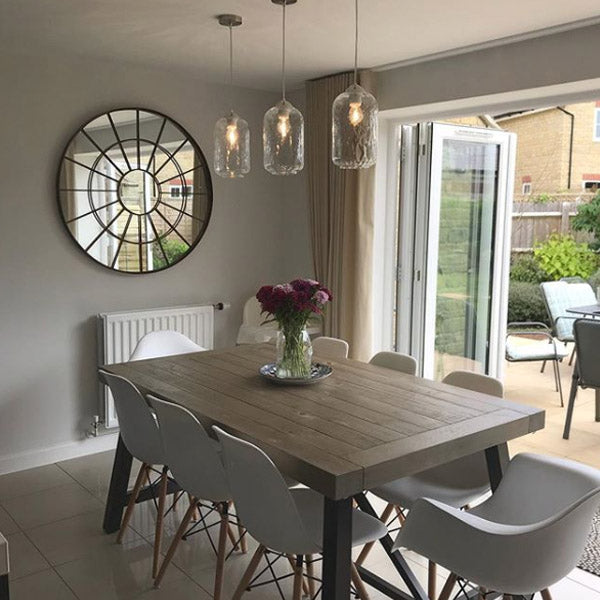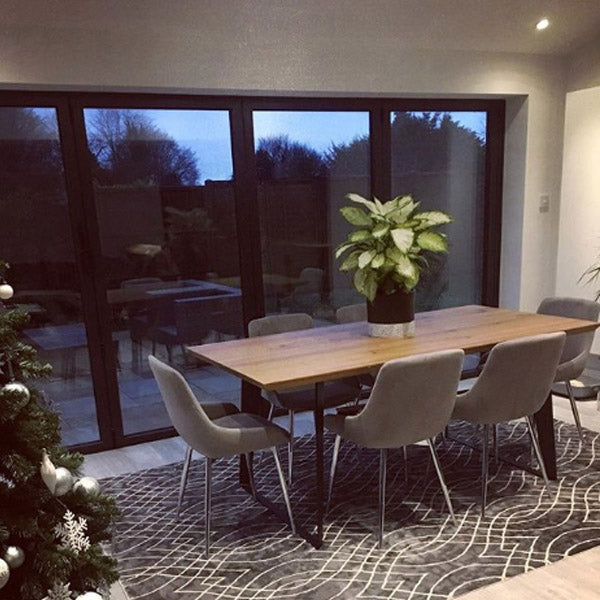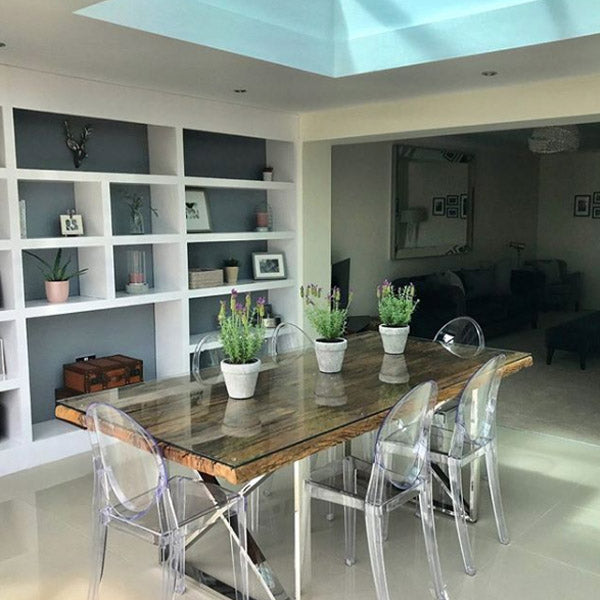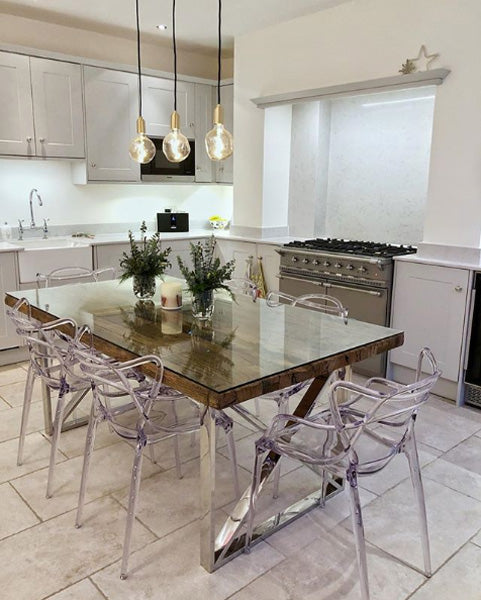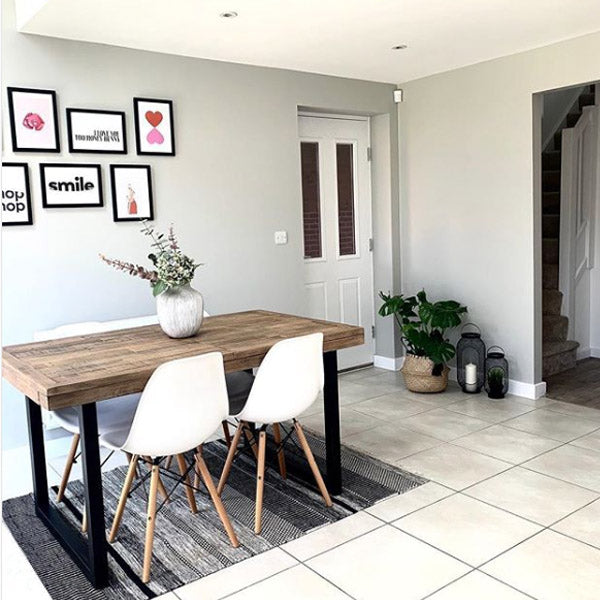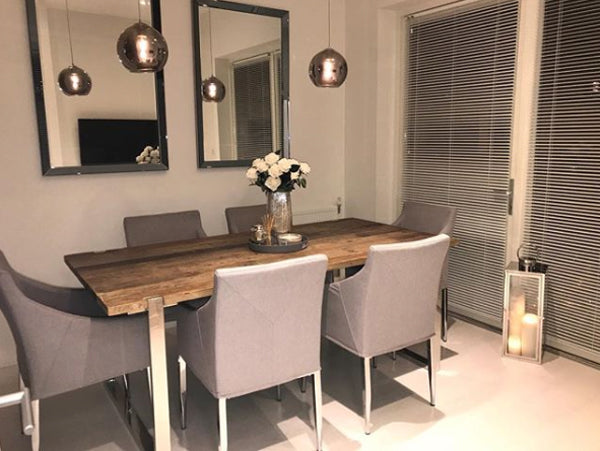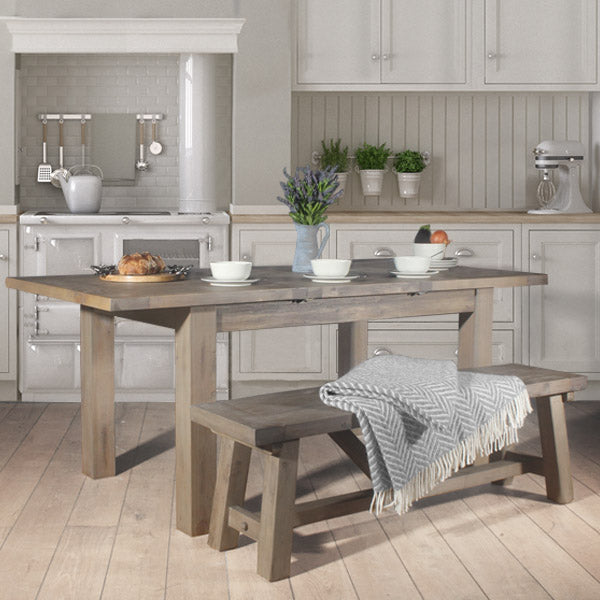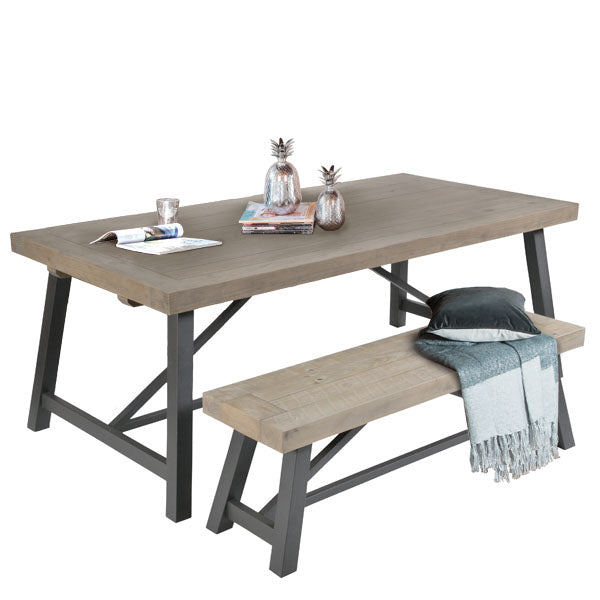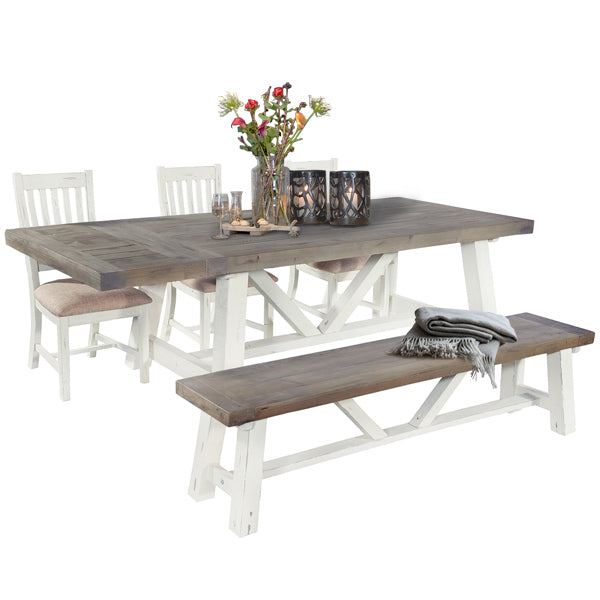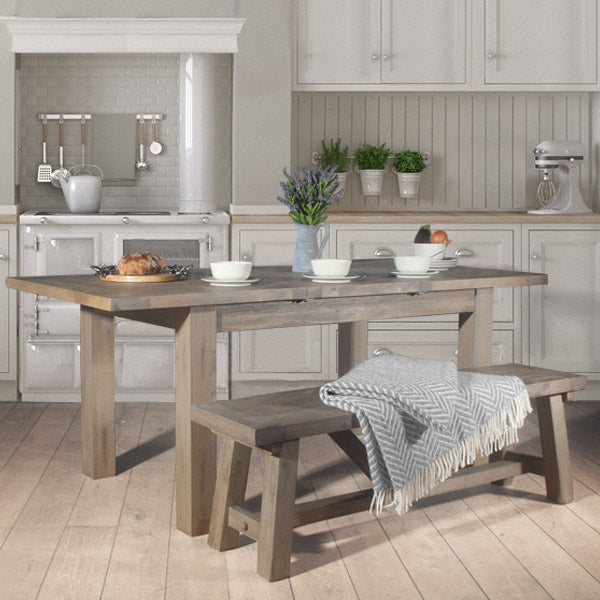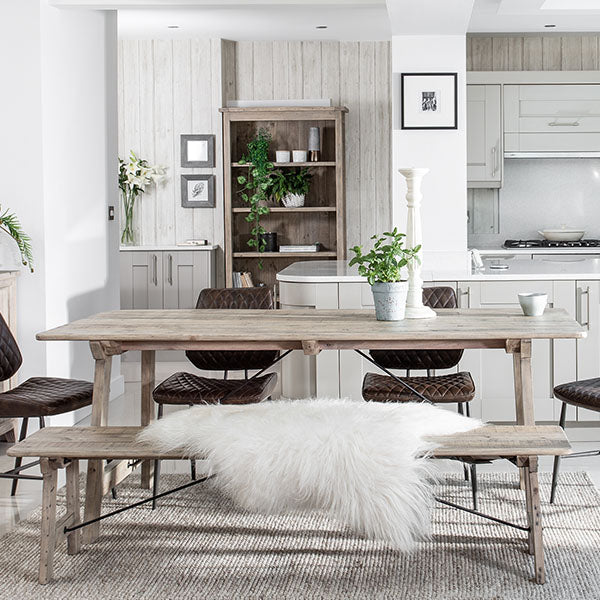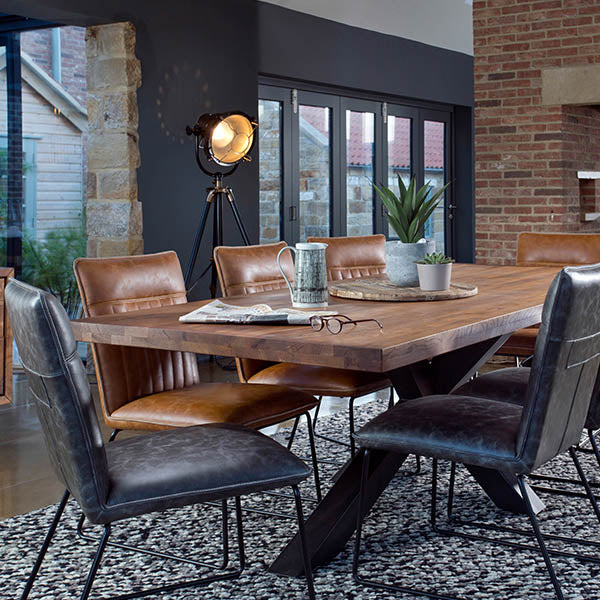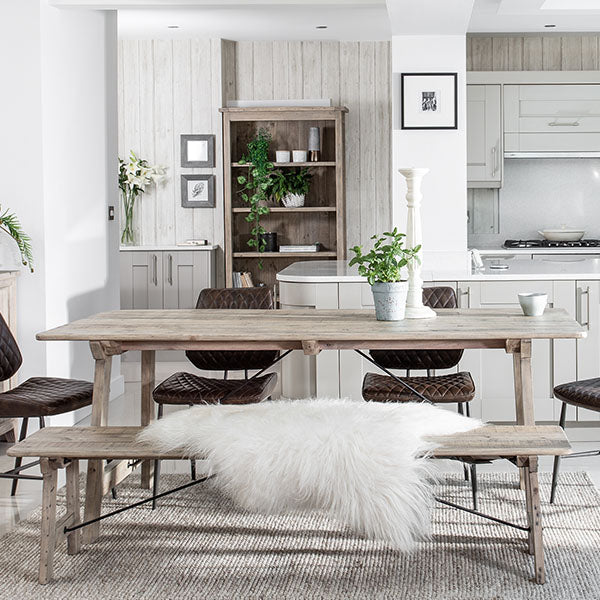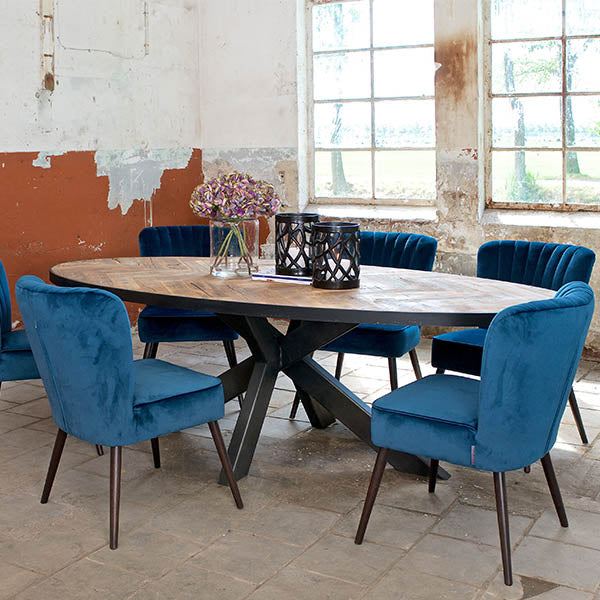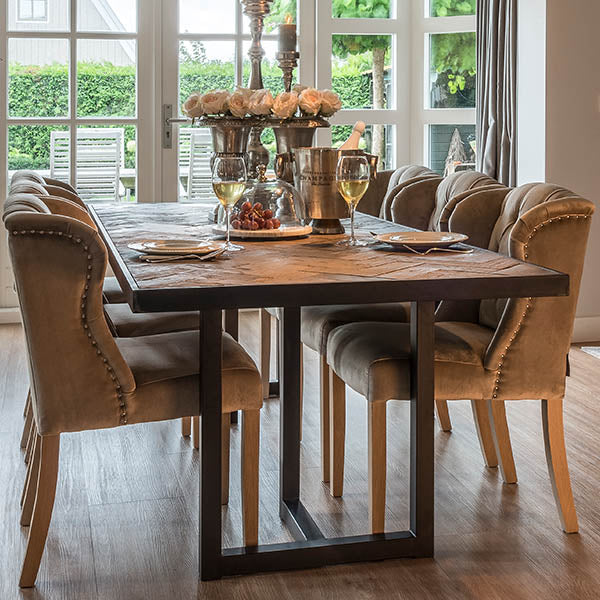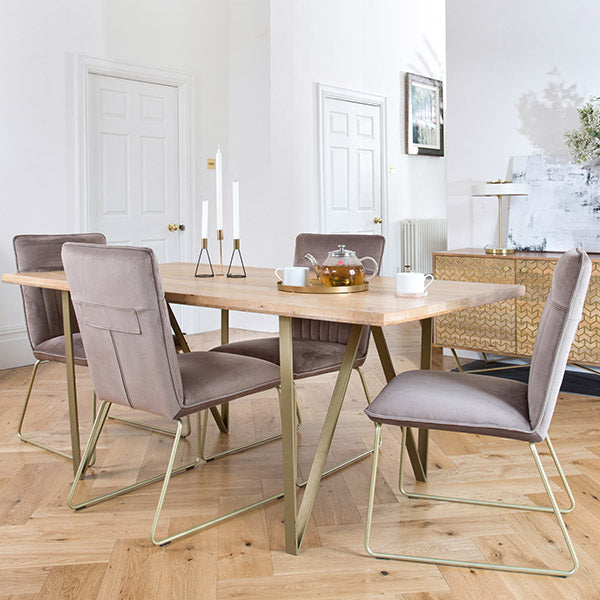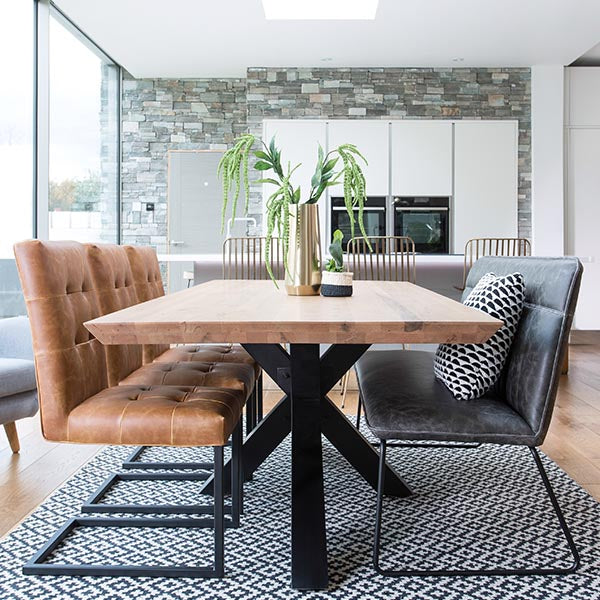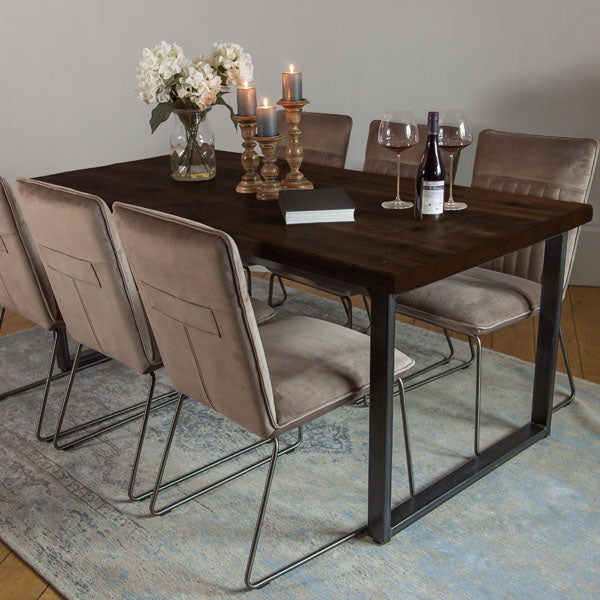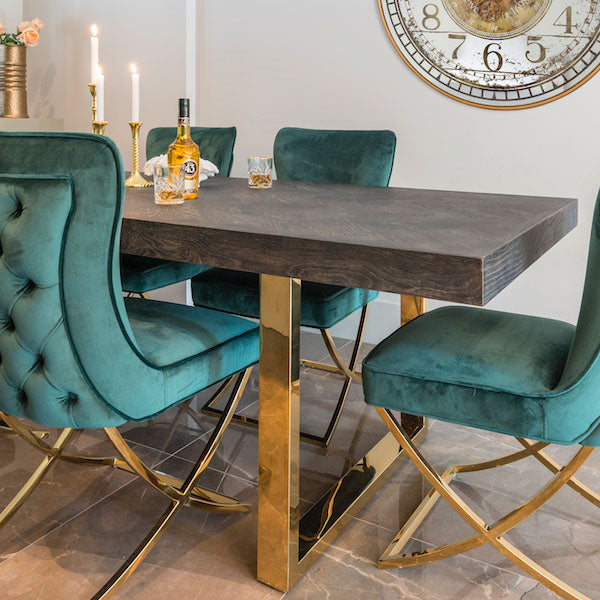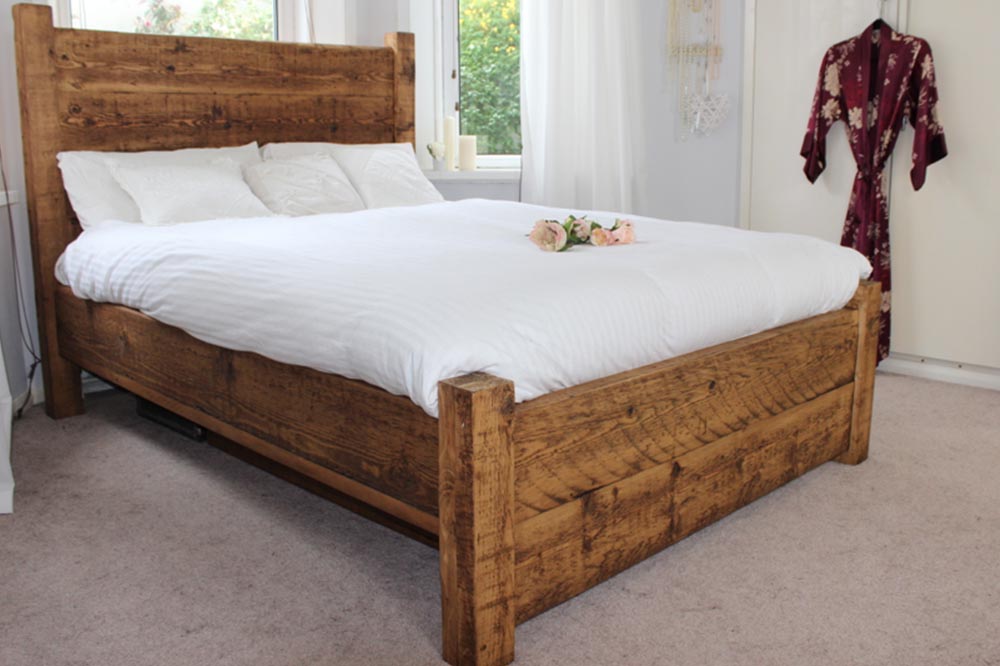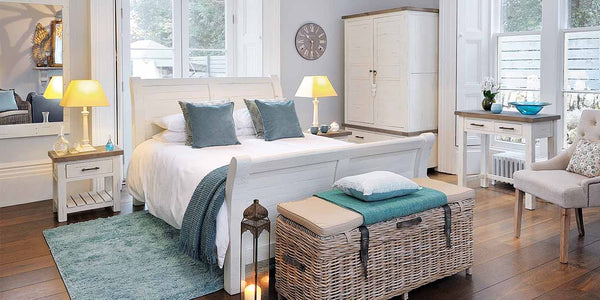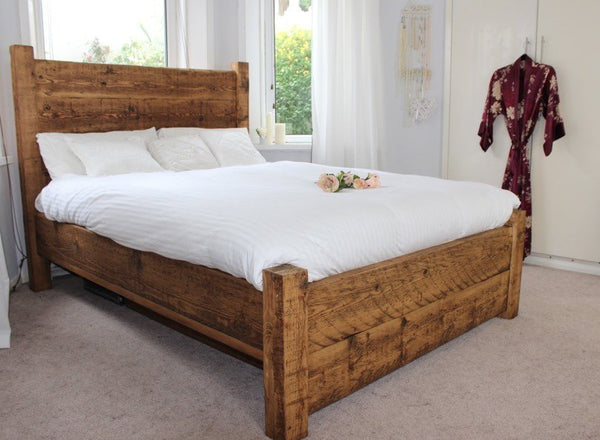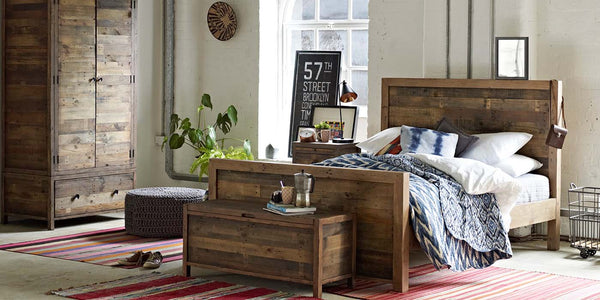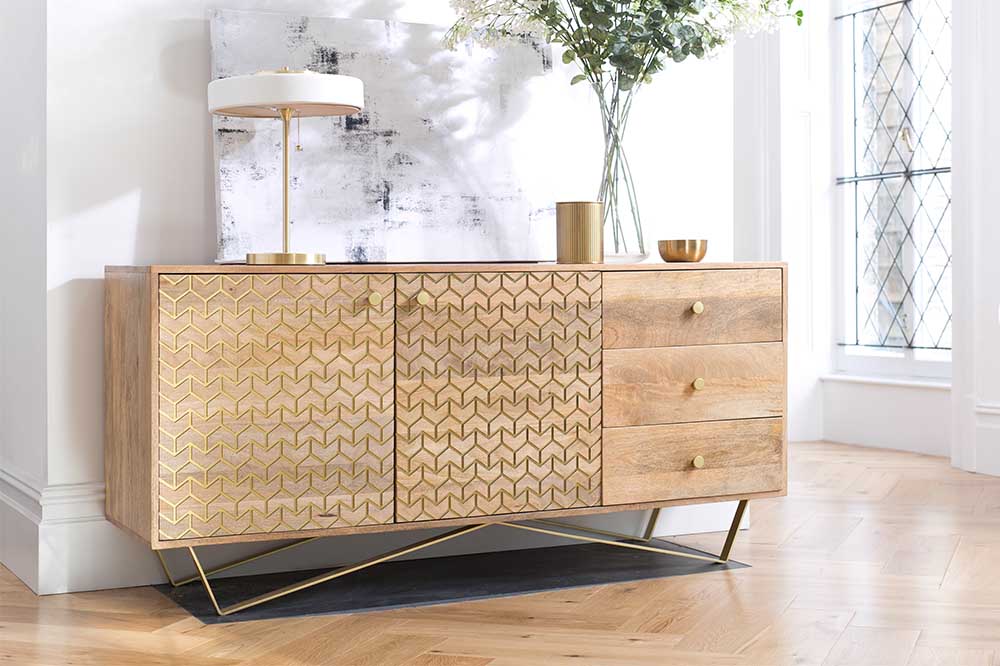
A pattern is wonderful. It adds charm and interest, lifting a room to become a three-dimensional space to the eye. A pattern can hide things as well as casting a spotlight on key areas. Creating a focal point, using pattern in any room doesn’t have to be about just patterned wallpaper – how about introducing patterned reclaimed wood furniture.
In the dining room
The industrial look is as popular today as it ever was, the perfect styling for the dining room from the reclaimed wood dining table to the chairs and beyond. We will cast our styling eye across the range of patterned sideboards, and how they can be used to maximum stylish aplomb in the dining room.
Pattern in the industrial style
We often think that the industrial style is a by-word for minimal, with very little fuss and detailing. Whilst it may not be the most ostentatious of interior design styles, using geometric patterns is perfect. Why? The uniformity of geometric shapes and patterns is ordered and sleek, ideal for any room.
Dimensions are important
The large sideboard is the cupboard and shelving space that adds much-needed storage to the dining room – this means an industrial sideboard is a must.
Size is important. Too big and it closes down space, but too small, and it won’t offer the storage space you need. However, there is one question that needs a definitive answer – just how tall should a dining room sideboard be?
The answer: a bit higher than the dining table. The most ‘common’ height is around 91.5cm tall. If you want everything in proportion, measure the height of the dining table and opt for a sideboard that is slightly taller. The Retford sideboard, a recent addition to our range, is a beautiful dark wood piece that stands at just over 91cm.
However, in terms of dimensions and height, you will need to be confident that the height of the sideboard doesn’t close down the room. The Chalfont sideboard with its cupboard and drawer space is low and long, something that may sit better alongside your industrial dining table.
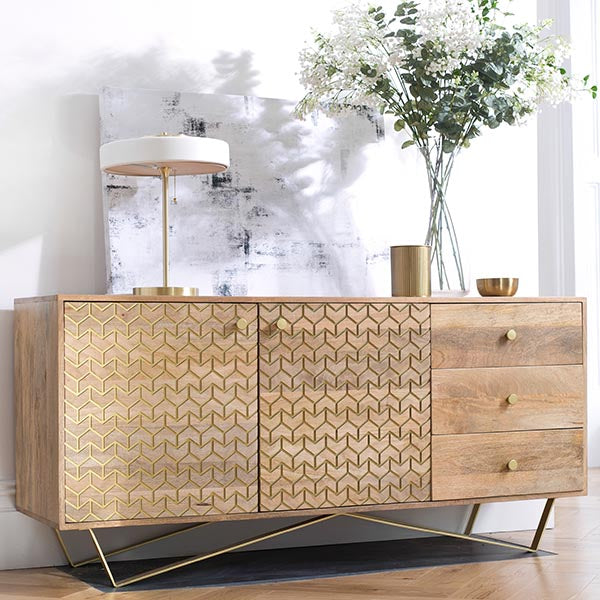
But a small sideboard can work just as well such as the beautiful Wardour sideboard, another recent addition. Its bijou nature makes it ideal for a smaller kitchen (or even the living room next to a velvet Chesterfield sofa) and the sundial, radial pattern. As industrial furniture goes, this must surely be one with the most beautiful finish and patterning to it.
Pattern ‘type’ plays a role
Using a pattern in a room can make people nervous for fear that it will be a clashing catastrophe. Stay with the same pattern shape and/or colour for success and you will have a stylish success on your hands.
For example, the parquet type patterning on the Kingsbridge industrial sideboard is versatile, ideal alongside any other pattern. Equally as successful would be the patterns of the Mitcham industrial sideboard, a medium-sized unit that offers plenty of storage solutions too.
Which patterns for the industrial look?
Florals and tropical prints may not sit well within the more utilitarian appeal of the industrial look but there is a twist on the style where they would fit in. The glamorous industrial style swaps black steel for the gold coloured finishes, not unlike that found in the Chalfont range.
Our top tip for using patterns is to choose an overall palette and combine with plain walls, using the patterns in the rug and other soft furnishings, as well as key accents, with industrial style furniture.
